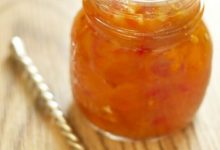🍝 Sure, I’d be happy to provide you with a detailed response about an Awesome & Easy Pasta Salad! 🥗
What is Pasta Salad?
Pasta salad is a versatile and popular dish that combines cooked pasta with a variety of other ingredients, typically served cold or at room temperature. It’s known for its refreshing taste and is often enjoyed as a side dish or even a main course.
History of Pasta Salad:
Pasta salad’s origin is a bit challenging to trace, but it likely evolved from Italian pasta dishes. In the United States, pasta salad gained popularity during the mid-20th century as a convenient and customizable side dish for picnics, barbecues, and potlucks.
Components of Pasta Salad:
A typical pasta salad consists of the following components:
- Pasta: Various types of pasta, like rotini, penne, or macaroni, can be used.
- Vegetables: Common choices include cherry tomatoes, cucumbers, bell peppers, and red onions.
- Protein: You can add proteins like grilled chicken, shrimp, or even vegetarian options like tofu or beans.
- Dressing: A flavorful dressing made from ingredients like olive oil, vinegar, herbs, and spices.
- Extras: Ingredients like olives, cheese, nuts, or fresh herbs can add extra flavor and texture.
Steps to Prepare Awesome & Easy Pasta Salad:
Step 1: Cook the Pasta
- Boil water in a large pot and cook the pasta according to the package instructions until it’s al dente.
- Drain the pasta and rinse it under cold water to stop the cooking process.
Step 2: Prepare Ingredients
- While the pasta is cooking, chop your vegetables, proteins, and any extras you’d like to add.
Step 3: Make the Dressing
- In a separate bowl, whisk together olive oil, vinegar (like red wine or balsamic), minced garlic, and a combination of dried or fresh herbs (like basil, oregano, or parsley).
- Season the dressing with salt and pepper to taste.
Step 4: Combine Ingredients
- In a large bowl, combine the cooked and cooled pasta, chopped vegetables, protein, and any extras you prepared.
Step 5: Dress the Salad
- Pour the dressing over the pasta and ingredients in the bowl.
- Gently toss everything together until well coated with the dressing.
Step 6: Chill and Serve
- Cover the salad and refrigerate for at least an hour to let the flavors meld.
- Serve it cold or at room temperature.
Total Time Needed:
The time required to prepare an Awesome & Easy Pasta Salad can vary but generally takes around 20-30 minutes for prep and cooking the pasta. Then, you’ll need at least an hour of chilling time in the refrigerator before serving. So, plan for a total of about 1.5 to 2 hours.
Enjoy your delicious pasta salad! 🍽️😊🥒🍅🧀
Certainly! Here are the nutrition facts and some health information for a typical pasta salad. Keep in mind that the exact values may vary depending on the specific ingredients and portion sizes used.
Nutrition Facts for a Standard Pasta Salad (per serving, approximately 1 cup):
- Calories: Around 250-300 calories
- Protein: Approximately 7-10 grams
- Carbohydrates: About 30-40 grams
- Dietary Fiber: 2-4 grams
- Sugars: 3-5 grams
- Fat: 10-15 grams
- Saturated Fat: 1-3 grams
- Cholesterol: 0-20 milligrams (depending on protein source)
- Sodium: 300-500 milligrams
- Vitamins and Minerals: Varies based on ingredients, but pasta salads often contain vitamins A, C, and K, as well as minerals like potassium and calcium.
Health Information:
Pasta salad can be a relatively healthy dish, especially when prepared with a focus on nutritious ingredients. Here’s some health information to consider:
-
Nutrient Variety: A well-balanced pasta salad can provide a variety of nutrients, including vitamins, minerals, protein, and fiber, depending on the vegetables, proteins, and pasta used.
-
Fiber: Pasta salad can be a good source of dietary fiber, particularly if whole wheat or whole grain pasta is used. Fiber aids in digestion and helps you feel full.
-
Protein: Adding lean protein sources like grilled chicken or beans can make the salad more satisfying and provide essential amino acids.
-
Vegetables: Including a range of colorful vegetables in your pasta salad provides essential vitamins and antioxidants. These can support your overall health.
-
Healthy Fats: Using olive oil in the dressing can provide heart-healthy monounsaturated fats.
-
Sodium Control: Be mindful of the sodium content, especially if you’re adding salty ingredients like olives or feta cheese. You can reduce salt by choosing low-sodium options or using less in the dressing.
-
Portion Size: Pay attention to portion sizes, as pasta salad can be calorie-dense. Stick to reasonable portions to manage your calorie intake.
-
Customization: Pasta salad is highly customizable, so you have control over the ingredients you include. Opt for whole grains, lean proteins, and plenty of veggies for a healthier option.
-
Allergies and Dietary Preferences: Pasta salad can be adapted to suit various dietary needs, including vegetarian, vegan, gluten-free, or dairy-free, depending on ingredient choices.
Remember that the overall nutritional profile of your pasta salad will depend on the ingredients you select and the portion size. To make it as healthy as possible, incorporate a variety of colorful vegetables, lean proteins, and use whole grain pasta when possible. This will help you create a nutritious and delicious meal. 🥗🍽️



